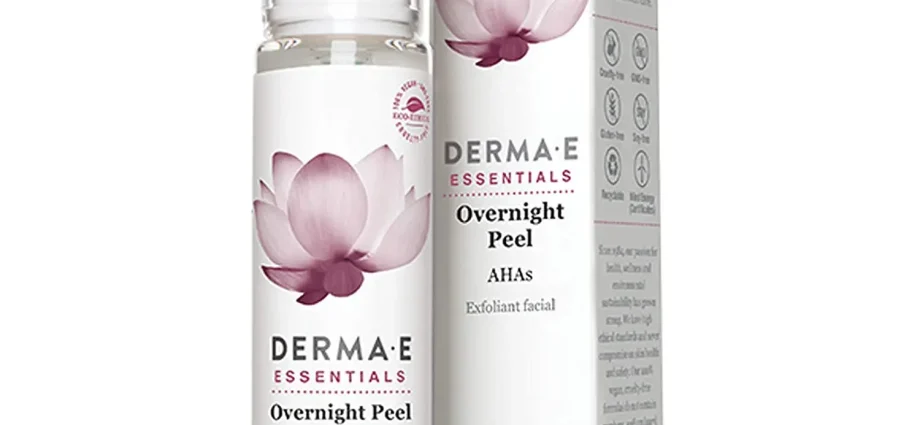Contents
It’s definitely not worth giving up facial skin care before bedtime. But is it worth including peeling in the evening beauty routine? Let’s figure it out.
What is night peeling
“At night, all renewal processes are more intense, including exfoliation, in which dead cells leave the surface of the epidermis.
Any peeling is a microdamage to the skin, even if it is mild, which is perceived as a stimulus, a signal for regeneration.”
Peeling makes the skin more sensitive to UV light, so exfoliating formulations are usually applied in the evening.
By eliminating dead cells, the acids in the peels enhance the effectiveness of the active ingredients.
Night peels are usually produced in the format of a serum or lotion, less often a cream. The product is applied on its own or before the usual care and left on the skin until morning.
Mechanism of action
Night peels are quite gentle, but at the same time effective. They do not destroy living cells, as some professional acid formulations do, but facilitate the exfoliation of dead cells, that is, they affect the most superficial layer of the epidermis.
“Exfoliation occurs very gently, gradually, without noticeable skin injury. You can often find products with antioxidants and soothing ingredients,” says Ekaterina Turubara, Vichy.
Indications for use
With age, the rate of cell renewal slows down, but night exfoliation is not only beneficial for aging skin. You should consider peeling if you have:
oily skin type;
dull skin;
expanded pores;
black dots;
uneven skin microrelief;
dark spots;
superficial wrinkles;
peeling;
“tired” skin.
Benefits and Efficiency
Night peeling significantly improves the appearance of the skin, evens out its texture and color, and also increases the effectiveness of any care.
Night peels restore radiance to the skin.
Expected Result
Night peeling works quickly enough, but a noticeable result should be expected, as a rule, after 28 days of systemic use. What effects can be expected from this?
Radiance and smoothness of the skin.
Fresh complexion.
Less visible and clean pores.
Reducing greasiness.
Reduced visibility of age spots.
Decreased severity of post-acne.
Is your skin… getting enough sleep? Take our quiz to find out.
What types of acids are suitable for night peeling
Night peels include only a limited list of gentle acids.
Alpha hydroxy acids: glycolic, malic, lactic or pyruvic – act most gently.
Kojic acid effective against pigmentation.
Salicylic acid is suitable for oily and problem skin.
How to do night acid peeling of the face
Peeling agent is used after cleansing and toning the skin according to the instructions. The two most common uses are:
spread over the skin like a serum;
Apply to a cotton pad and wipe your face with it.
Review of the best night peels
Healthy-Food editorial presents the most effective products in the category of night peels.
Nightly Refining Micro-Peel Concentrate, Kiehl’s
A mix of fruit acids of blueberry, citrus, sugar maple, sugar cane, as well as phytic acid and quinoa extract delicately and gradually exfoliate dead skin cells. Returns smoothness, radiance and softness. Skin tone and texture are visibly evened out.
Glycolic 10 Renew Overnight, SkinCeuticals
The emphasis is on a combination of 10% glycolic and phytic acids. The formula includes soothing ingredients for skin comfort. However, in order to prepare the epidermis, it is recommended at first to use the product every other day.
Safety measures
“Peeling should not be performed if the skin has abrasions, scratches and cuts, a squeezed pimple,” warns Vichy expert Ekaterina Turubara. – The presence of any rashes caused by allergies, eczema or herpes is a reason to consult a dermatologist. The exception is already healed wounds and formed scars and scars, they will gradually smooth out with such care. Acne papules (red pimples) and comedones (black dots) are not a contraindication for gentle peeling.”










